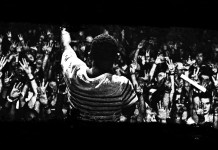As filmmaker and hip-hop historian Michael Holman states in The Way of the B-boy, “Hip-hop is about three words, ‘Look. At. Me.’” No element of the culture, or the artistry associated with them, screams this as loudly as breakdancing.
Let’s face it. Breaking is the Gucci of hip-hop! The flash! The pizzazz! The acrobatic, emphatic, enigmatic element. While they are certainly those who can appreciate the graffiti writer, the emcee and the DJ, it is the breakdancer, freezing in his B-boy stance, then top rockin’ his way into a whirlwind of flailing bodyparts, tornadic spins and monstrous drops, that will stop even the non-appreciative in their tracks.
It is with this in mind that Theirry Daher, enlisting the help of world-famous B-Boys Fever One (NYC, representing DVS, Rock Steady Crew) and Jeromeskee (Seattle, representing Massive Monkees Crew, Rock Steady Crew ), sought to create The Way of the B-boy, a self-described documentary-slash-tutorial, showcasing a equal amount of history and instruction. Daher and directors Chad Ross and Zak Tucker pictured a “common vision, which was shared by Jeromeskee and Fever One,” Daher explained. “This is about teaching the dance, and learning about the culture.”
But as the subjects of the film know, you don’t always nail the move.
Fever One foresaw the difficulty constructing such a project, explaining, “It’s a hard balance, doing a documentary slash tutorial slash whatever, not to have it look like three different films.”Despite this, at times it felt just like that. While the documentary footage elicited nostalgic excitement from the old school breakers and B-boy elite in attendance at the Tribeca Cinemas screening, the tutorials shown were a fairly elementary demonstration of breakdancing elements. Again, the idea was to ensure that those learning were learning the “authentic” styling, which is a great endeavor, but after watching the intensity of archival footage, it was almost difficult to sit through the basic tutorial. I can’t shake the feeling that those who would enjoy the archive footage won’t care much for the basics, and vice-versa, precisely the dichotomy the filmmakers endeavored to avoid. That being said, both “segments” of the film serve their respective purposes well.
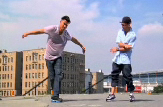 The tutorials cover the gamut of breakdancing fundamentals, including Top Locking, Footwork, Drops, Freezes and Power Moves. I could easily see my son watching and seeking to perfect these foundational steps, precisely what the filmmakers were seeking. As an informative, authentic tutorial, taught by these two breakers who respect and wish to maintain the authenticity of the culture and the dance, they did a fine job teaching an undiluted, purist version of the basics. “We’re not really trying to claim anything,” Fever One reminded us in the post-screening interview, “we’re just saying, ‘This is what we do, this is why we do it, and this is how we do it’”.
The tutorials cover the gamut of breakdancing fundamentals, including Top Locking, Footwork, Drops, Freezes and Power Moves. I could easily see my son watching and seeking to perfect these foundational steps, precisely what the filmmakers were seeking. As an informative, authentic tutorial, taught by these two breakers who respect and wish to maintain the authenticity of the culture and the dance, they did a fine job teaching an undiluted, purist version of the basics. “We’re not really trying to claim anything,” Fever One reminded us in the post-screening interview, “we’re just saying, ‘This is what we do, this is why we do it, and this is how we do it’”.
While the tutorials are full of somewhat rigid instruction, the documentary footage is pure fun, full of classic breaking, interviews with those original breakers, most notably the sage-like Pop Master Fabel (Rock Steady Crew) and the often humorous retelling of O.G. stories from those like Lil’ Lep (The Seven Deadly Sins), and hip-hop pioneer Grandmaster Caz (Casanova Crew, The Cold Crush Brothers).
Overall, The Way of the B-boy is an interesting experiment, attempting to re-introduce the public, and most specifically, young kids who are interested in breakdancing, to the origins of the art form, and in learning the mechanics of the dance moves. However, those who are more interested in the documentary portions of the film, might easily tire of the tutorials.
Sporting a complete direct-to-digital, download-from-the-web style of independent distribution, it is  extremely easy to obtain this film, and relatively inexpensive, at $15 (individual “chapters” can each be purchased for $1.99).
extremely easy to obtain this film, and relatively inexpensive, at $15 (individual “chapters” can each be purchased for $1.99).
Well-suited for very young teens who are interested in learning B-Boying, with the added bonus of presenting the history and authenticity, The Way of the B-boy makes a strong showing in its effort to teach the dance while teaching about, and preserving, the B-boy culture.
For more information, trailers, or to purchase The Way of the B-boy, visit www.wayofthebboy.com.
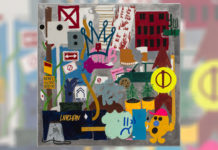
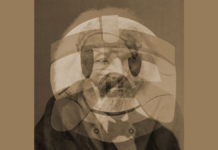
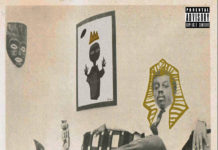
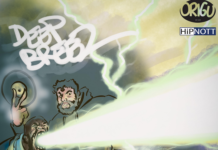

![The Underachievers – Crescendo [VIDEO]](https://www.birthplacemag.com/wp-content/uploads/2017/08/hqdefault-2-218x150.jpg)


![Fat Joe & Remy Ma ft. The-Dream – Heartbreak [VIDEO] Fat Joe Remy Ma The Dream - Heartbreak Video](https://www.birthplacemag.com/wp-content/uploads/2017/05/fat-joe-remy-ma-218x150.jpg)
![JSWISS featuring Chandanie – LML [VIDEO] JSWISS featuring Chandanie - LML [VIDEO]](https://www.birthplacemag.com/wp-content/uploads/2017/05/JSWISS-218x150.jpg)

![Akinyemi Ends Summer With “Summers” EP Release Show [9-17-17] Akinyemi 'Summers' EP release show at Brooklyn Bazaar](https://www.birthplacemag.com/wp-content/uploads/2017/09/summers-featured-218x150.jpg)
![4th Annual NYC VS EVERYBODY Yacht Party [9/16/17] #VSYacht 4th annual NYC VS Everybody Yacht Party#VSYacht](https://www.birthplacemag.com/wp-content/uploads/2017/09/vsyacht-218x150.jpg)






